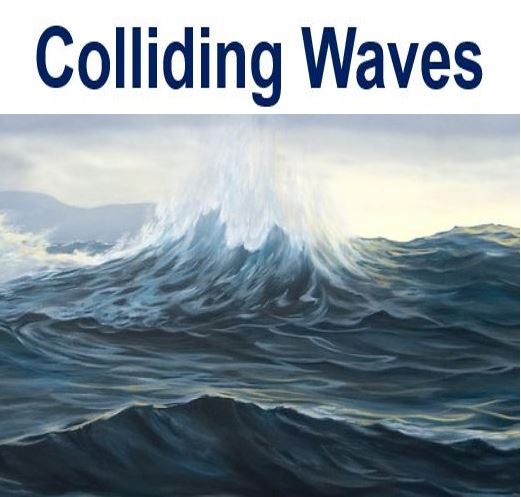For decades scientists have been at a loss to explain why planet Earth hums. French researchers say it is caused by ocean waves colliding. The low-frequency sound is not detectable by the human ear.
Seismologists (earthquake scientists) in the late 1990s discovered that Earth is vibrating continually at very low frequencies, even when no earthquake is present.
This micro-seismic activity is very faint, but might be detectable by some animals, such as elephants or whales.
Scientists have suggested the hum might be caused by electromagnetic radiation or submarine communications. Conspiracy theorists put forward several possibilities, ranging from the reasonable to totally bizarre, such as secret military activity, an alien tone emitted to control us, and beings from another parallel trying to get in touch.

Colliding waves are the most likely culprits of Earth’s continuous ‘hum’.
Scientists now say the most likely culprits for the continual hum are ocean waves.
Fabrice Ardhuin from CNRS-Ifremer-UBO-IRD, Lucia Gualtieri and Eléonore Stutzmann, both from the Institut de Physique du Globe (all three in France), used computer models of the seafloor, wind and ocean, and found that ocean waves were able to generate mini-seismic waves when they crashed into each other.
The researchers published their findings in the Journal Geophysical Research Letters (citation below).
Slower ocean waves can generate seismic waves with a frequency ranging from 13 to 300 seconds, the length of the ripple as it makes its way into the Earth’s mantle before dissipating.
Most of the enigmatic bell-like ringing ‘hum’ sounds come from these longer waves, the scientists claim.
In an interview with Live Science, Ardhuin said:
“I think our result is an important step in the transformation of mysterious noise into an understood signal.”
As scientists gain more insight into the ‘hum’, they might be able to generate more detailed maps of the Earth’s interior, Ardhuin added.
The scientists are not sure how deep down into the Earth’s mantle the seismic waves reach. They might penetrate right into the core.
By studying the paths of these sounds more carefully, we may be able to create a more comprehensive picture of our planet’s structure, the researchers said.
Waves travelling along shorelines might also be contributing to the overall effect, the authors added, as could water movement within mountains or at the bottom of the ocean.
Citation: “How ocean waves rock the Earth: Two mechanisms explain microseisms with periods 3 to 300 s,” Fabrice Ardhuin, Lucia Gualtieri and Eléonore Stutzmann. Geophysical Research Letters. Published 10 February 2015. DOI: 10.1002/2014GL062782.
